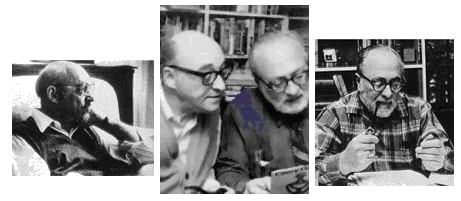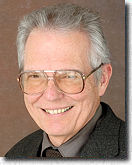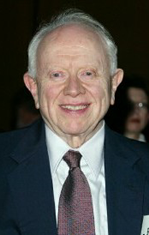This season of Passover and Easter Sunday made me think of ‘easter eggs’, lower case, not bird ovum but hidden goodies Apple famously hid in the Macintoshes (although Atari is credited as the first to conceal little secrets in their machines).
I asked my colleagues what ‘easter eggs’ they deployed in their stories and identify those of their favorite authors, hidden gems for readers to find. Some responded with actual cloaked tidbits while others took a different tack and described disguising real persons and places in a circumspect manner. I touched upon the latter in an article two weeks ago where Alistair MacLean and David Morrell obliquely refer to Sir Edmund Hillary and James Dean respectively.
Academics have argued and disputed whether or not nursery rhymes have hidden meanings. They debate whether ‘Jack be Nimble’ and ‘Four-and-twenty’ Blackbirds may or may not refer to politically sensitively controversies worded with a veil of deniability. But certainly, many classical authors deftly hid meanings to some degree. Chaucer, Voltaire, and Dante for example, touched upon people and events that educated readers were expected to recognize.
Something is rotten in the state of Denmark. (Hamlet, Act I, Scene IV)
Shakespeare was noted for his word play. One of his most famous easter eggs is the eponymous Hamlet, an anagram of the Danish prince Amleth.
Jan Grape points out that mystery conferences sometimes auction off the opportunity to appear as characters in novels. The proceeds typically go to a literary or library charity. Some fans have paid big bucks to be in a very well known author’s book. I believe Frederick Forsyth was one of the first authors to offer to drag a fan into one of his novels. A writer can use a person's name as a character, place or thing. Jan says:
I’ve auctioned a character name a couple of times, didn’t get much money but I’m not a bestseller either. I asked that person if they wanted to be a good guy or a bad guy. Most want to be a bad guy, then I ask, if you want to be a bad guy… a murderer or a rapist? I don't want to make them horrible unless they agree.
In a recent David Edgerley Gates story, A Crown of Thorns, which takes place at the UNM campus in the late 1960s during the Viet Nam war protests, he gave Tony Hillerman a cameo, slightly disguised, but if you knew his local resume, you’d snap to it. Sea thriller author Clive Cussler often inserts himself as an unnamed character. One of his novels includes a cameo of an unnamed but famous British spy.
Rob reminded me that Elmore Leonard’s Up in Honey’s Room features a Nazi soldier named Otto Penzler, also the name of a famous editor and mystery bookstore owner in New York City.
I’ve set a scene in Lutz, Florida, an acknowledgement of one of my favorite writers, John Lutz.
John Floyd said John Grisham in his first novel, A Time to Kill, used a fictional setting of Clanton, Mississippi… but there is a real Canton with similar features!
Rob Lopresti lives in Bellingham, Washington as does Jo Dereske, who sets her Miss Zukas books in the college town of Bellehaven. The southwest corner of Bellingham is Fairhaven. (Our friend ABA asks if Miss Zukas might be a Polish play on words.)
Eve Fisher switches around names of South Dakota towns in some of her writing, making it obvious to locals where the action takes place.
Melodie Campbell does something similar, writing a comic caper about the Cannot Hotel.
Anyone who lives in industrial Hamilton (The Hammer, to the locals) will know that I really mean The Connaught Hotel. The White Chapel cemetery becomes the Black Chapel cemetery.
David Edgerley Gates advised me that Dennis Lehane is known for using the names of his friends. So are our colleague, Jan Grape and John Floyd. John sometimes uses the name of a mutual friend, Billy Fenwick. Recently, John named a character in his Woman’s World series of stories Teresa Garver, the name of an East Coast fan.
Like the others, I often name characters based on people I know. I modeled and named a character in ‘Swamped’ after a high school classmate, Max. I hadn’t spoken to Max in years but once I knew that issue of Ellery Queen was in print, I phoned Max.
Although never one to complain, he’d been having a rough time: His health was failing, his finances were in freefall, his wife had left him, and he’d downsized from a sprawling farm to a tiny apartment.
I told Max about using him as a rascally character and he was delighted, a shiny bauble in a dark moment of time. I promised to get him a copy if he couldn’t get one at his newsstand, but within days, he died. I can imagine things going wrong when using friends’ names in stories, but in this case, those few words brought a bit of happiness.
Rob Lopresti also uses last names of friends for characters. One of his Alfred Hitchcock stories, 'Shanks Commences', uses the names of our Criminal Brief colleagues. (I've done something similar in a story I’m working on and the names are key to the solution.) The stories are clearly set in New Jersey, although he makes a point of not revealing the state.
Speaking of Jersey, Liz Zelvin slips in an actual 1990s case in this clever bit of dialogue in her latest Bruce Kohler novel, Dead Broke:
“It’s kind of mind-boggling,” Cindy said, “a rabbi having an adulterous affair with his sister-in-law, much less murdering her. What about the Ten Commandments?”
“What about them?” Natali said. “Human nature is what it is. By the time you make detective, your mind will have left boggling far behind. He wouldn’t even be the first. There was a rabbi in New Jersey who hired hit men to kill his wife.”
“Oh, New Jersey,” she said.
“It’s no excuse.”
Fran Rizer tells us a lot of what happens in the Callie books is based on real events. (I love these ‘writer uncovered’ stories.)
At lunch today with an old friend I haven’t seen in years, the subject of a particular concrete block nightclub out in the country and its highly unusual proprietor was mentioned. We continued to chat, and then the lady sitting at a table across the aisle from us asked me point-blank.
“Did you know the place you're talking about is just like a club called June Bug’s in one of the Callie Parrish books?”
“Do you read Callie Parrish books?” I asked.
“I’ve read them all,” she said. “I’ve heard the lady who writes them lives in this area.”
I had to confess that I’m Fran and that June Bug and his nightclub were based heavily on the place she named.
Rob relates the following.
Donald Westlake and Joe Gores wrote the same scene into each of their books. Twice. For example, in 32 Cadillacs a DKA detective traces a car that Dortmunder’s pal Stan Murch stole. In Drowned Hopes, Dortmunder and Murch watch in amazement as the stolen car is repossessed. In Dancing Aztecs, a character stops at Coe’s garage, where she meets a mechanic named Tucker. This is Westlake’s way of explaining what his pseudonym Tucker Coe did after Westlake stopped writing about him.
Author Carolyn Jenkins hadn’t named a radio station set to appear in her recent novel Scout Out Denial. Brainstorming came up with the call letters ‘KRLN’, her name sounded out and, shy as she is, it stuck.
If anyone’s written more about easter eggs than I have, it’s Dale Andrews and I wrap this up with him.
Ellery Queen was noted for hidden references that tied the series together in strange ways that were basically irrelevant as to individual plots. The references to Easter, for example are both rampant and unexplained anywhere. Remi Schulze, a French "Queen scholar" has devoted entire websites to numerological and other hidden references in the Queen mysteries, including Queen's repeated use of characters named either "Andrews" or a derivative of "Andrews." (I never saw that until it was pointed out to me which, given the circumstances, says something about my eye for detail!) In And on the Eighth Day, Queen's most direct mystery dealing with Easter, there is a character whose name is an anagram for a historical character. (The fact that this is an anagram is never revealed in the course of the novel.)
From my own (limited!) works, in 'The Book Case' there are clues from which the reader can deduce that the murder in fact took place on Easter Sunday, something never mentioned in the story. This, of course, was done as an homage to Queen's bizarre fixation on that holiday. And in my most recent Queen pastiche, 'Literally Dead,' there is a way to determine (roughly) when the story occurred. When I try to breathe life back into EQ I imagine that he was born in 1905 (consistent with the 1905 birth dates of Dannay and Lee, and also consistent with what we are told in The Finishing Stroke). So that means, sadly, that Ellery is no longer with us. In 'Literally Dead', which otherwise is a contemporaneous mystery with an elderly Ellery, one character is identified as running the local Amoco station. As of 1998, all Amoco stations became BP stations. So we know, if we spend the time thinking about it, that the story is set pre-1998 when Ellery has yet to turn 100! He is 102 at the time 'The Book Case' was published, and that is likely as old as I (at least) will ever let him become!
What literary easter eggs can you tell us about?







.jpg)






















